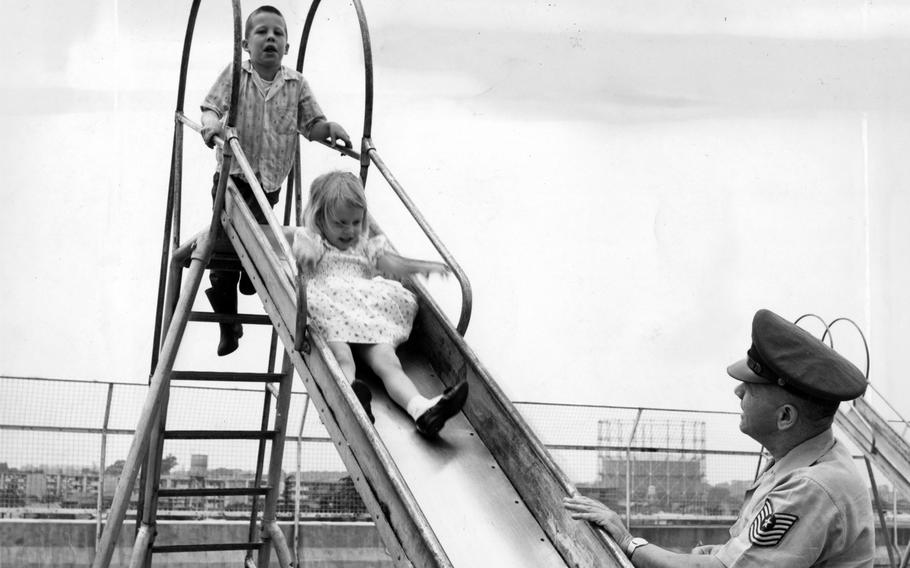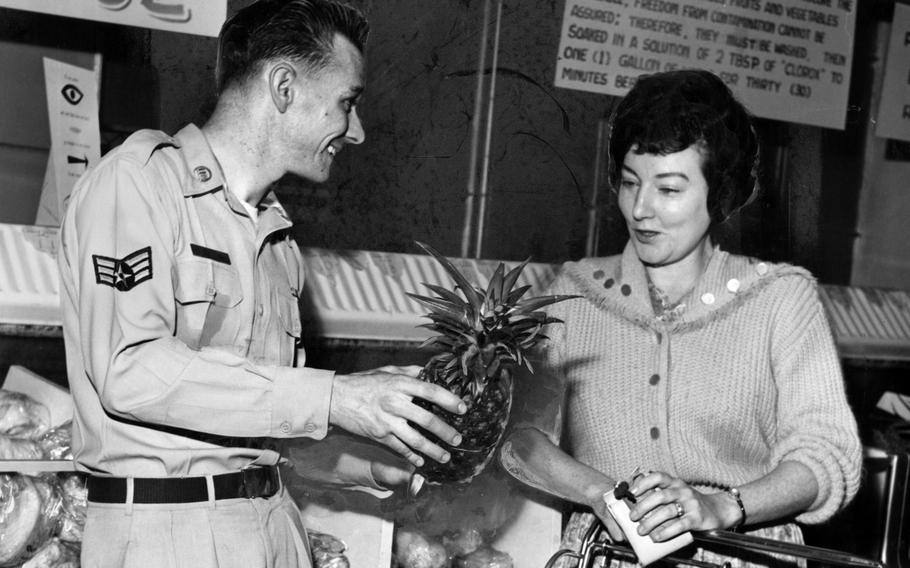
Children blow off steam at Green Park Housing Allex's rooftop playground in May 1962. Green Park, in western Tokyo, housed more than 2,000 people at a time between 1954 and 1973. (Stars and Stripes)
MUSASHINO, Japan — Memories of an American military housing area that once stood where Imperial Japan built aircraft during World War II are on display at a history museum in western Tokyo.
Green Park Housing Annex, open between 1954 and 1973, could house more than 2,000 U.S. service members and their families at a time, according to Hiroyuki Takano, an archivist at Musashino Furusato Rekishikan. The museum is displaying old copies of Stars and Stripes, photos, documents and objects related to the factory and the housing area.
The exhibit includes images of daily life at Green Park in Musashino, about 15 miles from central Tokyo. Stars and Stripes in May 1962 described Green Park as one of the largest military housing developments of its kind in the world.

Green Park Housing Annex's commissary manager helps a shopper select a fresh pineapple in May 1962. Green Park, in western Tokyo, housed more than 2,000 people at a time between 1954 and 1973. (Stars and Stripes)
A vast apartment building there was “so completely equipped that a housewife can obtain practically every living necessity and convenience without going outside the building,” the report said.
The housing complex included a 28-room elementary school, swimming pool, gas station, fire station, boiler plant and auto hobby shop.
The four-story structure had a children’s playground on its roof and a base exchange in the basement. It included officer and enlisted clubs, a bank, several youth clubs, barber and beauty shops, a snack bar, library, movie theater, dispensary, bakeries, laundries, gift shops, jewelry stores and a shoe repair shop.
The museum exhibit, which ends Sept. 28, includes a video interview with a U.S. Air Force veteran and his wife who lived at Green Park in the early 1970s.
The people living there worked at Yokota Air Base near Fussa and the nearby Tachikawa and Fuchu air bases, which U.S. forces vacated in the mid-1970s, Takano said during a tour of the museum Tuesday.
During World War II, Nakajima Aircraft Co. built engines for the Japanese army navy on the site that became the American housing area, Takano said.
The museum exhibit includes aerial photographs that U.S. forces used to plan nine bombing raids on the factory during the war.
There’s a piece of rusty metal from a bomb dropped on the factory, and photographs of U.S. Navy F-4U Corsair fighter-bombers that launched from the aircraft carrier USS Bunker Hill to bomb the factory on Nov. 24, 1944. A copy of the deputy factory manager’s diary explains the bombings.
Locals opposed the plan for an American housing area on the factory site because they feared it might become a military target, Takano said.
Green Park closed and the land was returned to Japan in 1973. Today the area is a green space amid Tokyo’s concrete jungle — Musashino Central Park —which opened in 1989.
The museum is open daily, 9:30 a.m. to 5 p.m., except Fridays and national holidays. Admission is free.